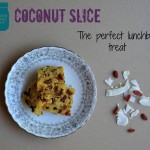…there’s not just one ‘thing’ about grains. By that I mean, there is no one solution. As I discussed in my Food Philosophy post, we are all different. We have to figure out what works for us, as individuals. You have to figure out what works for you.
But so many of you have asked me about what my feelings are around grains, and why I do what I do. So take this as my attempt to relatively decently explain, in a very simplified and unscientific fashion, my take on grains.
Sarah is in a relationship with Grains, and it’s complicated.
I don’t do whole grains. My body just won’t let me. If I eat whole grains, I get reeeeeeeeeeeally bad stomach cramps. The kind in which you feel like you have little mini zombies or gremlins or something residing in your intestines, clawing their way out. Which is kind of what whole grains are anyway. Little tiny monsters that don’t want to be trapped inside a body.
Let me explain.
The sole purpose of any organism is to procreate and pass on its genes to the next generation. Pretty basic evolutionary science here, kids. Grains are an amazing example of this. They’ve evolved a system, over time, that works really well for them. Shame it doesn’t work out so well for us.
The sole purpose of one grain of brown rice that you eat, is to make it out alive and whole. If you’re a grain of brown rice that can achieve that mission, your chances of reproducing and passing on your genes are much, much higher than those of a grain of brown rice which doesn’t have the same ninja escape abilities. So grains that evolve mechanisms to aide them in their mission of getting out of there alive are going to proliferate while others will die out.
So what are these mechanisms? They’re called antinutrients. Because they are the opposite of nutrients. They don’t nourish, they don’t promote the health of the organism which ingests them; they do the opposite. They aggravate the digestive system of that organism. Some antinutrients, like phytic acid, may actually bind to other nutrients and essentially rob you of the good stuff. They do all this so that the organism freaks out and expels them out the other end whole. In a nice, convenient little pile of manure which will give that grain even more of a reproductive edge.
Where are these antinutrients found? You guessed it (or maybe you already know it) – tucked up in bed with the nutrients that whole grains are so famous for, in that outer layer. What does that mean? We want nutrients, right? But we certainly don’t want antinutrients. Ahhh, crisis! What do we do?!
Those familiar with the teachings of Weston Price will have an answer at the ready – soak, soak, and soak. Soak your grains overnight, and the antinutrient content will decrease.
What?! Getting rid of antinutrients is as simple as sticking the grains in some water with a little bit of apple cider vinegar?!
Well, kind of. It decreases the amount of antinutrients. Basically, by soaking your grains, you are tricking them into thinking it’s the right time to start sprouting. Some of the antinutrients are there to stop the grain from sprouting too early – when the conditions are less than ideal (i.e. when they’re in your belly!) and sprouting would be disastrous. When you trick the grain into thinking it’s in the right place at the right time and can start sprouting, enzymes in the grain get kicked into gear and start breaking down the antinutrients so that the grain can sprout.
It’s pretty cool, really.
However, it doesn’t work for all of us. Some of us are so sensitive to these antinutrients that even soaking doesn’t do it for us. Like me. I can’t comfortably tolerate even soaked grains – so why bother? My body is obviously not gaining anything from the experience of eating soaked whole grains, and frankly, I feel like shit when I do. What’s a girl to do? White grains are the devil, are they not?
Not. In fact, many traditional cultures polished their grains. And before they polished them (or if they couldn’t afford polished grains), they bashed them around enough to be able to sieve the outer layers off the nice, fluffy little antinutrient-free package inside. There’s a reason polished grains were so coveted, and it’s not just because they taste good. If you think about it – pre-technology-that-made-everything-easier (and even after the introduction of what is, by comparison, very rudimentary technology), cultures would not have used up valuable resources bashing and sieving their grains if it wasn’t super beneficial to do so. You don’t expend that much energy for something just because it tastes better. There’s something else going on here, and I reckon it’s all about those antinutrients.
Yes, what I am trying to say here is – I eat refined carbohydrates. Happily. Without my stomach screaming at me to stop. And the above reasons are my why.
A few things I want to clarify, though:
- Refined doesn’t mean processed. I don’t eat store-bought white bread chock full of preservatives, emulsifiers, and synthetic ‘nutrients’.
- And it’s still a good idea to soak white grains – sourdough is the way to go. This is less about the nutrients, and more about pre-digestion of the proteins. Another traditional way of making grains easier on our bodies. Who knows – maybe your body can even tolerate a sourdough bread with a small amount of whole grains.
- And I don’t eat grains often. I think, as a society, we eat WAY too many grains. They have become the base of almost every meal (think cereal or pancakes for breakfast, sandwiches or bagels for lunch, rice or pasta for dinner) and the snacks in between, in a standard diet. Grains are pretty filling – how on earth are we going to get the variety of natural foods that our bodies need, if we’re filling up on grains? Maybe your mum was right – don’t fill up on bread before dinner. 😉
- I aim to eat grains usually around four times a week. Yes, just four meals out of 21 meals in each week. And very rarely twice on the same day. Spread it out, share the love, and give your body a chance to get the other things it needs in between.
Above all, as always, listen to your body. If you have a strong, open line of communication between your body and your mind, you’ll know if something is wrong or right for you.
What is YOUR relationship with grains? Comment below. Let’s have a little chat. 🙂
If you’re still not convinced, or you’re hungry for more technical info, have a read of these pages:
http://holisticsquid.com/is-white-rice-bad-for-you/
http://www.thehealthyhomeeconomist.com/what-white-rice-better-than-brown/
http://butterbeliever.com/brown-rice-vs-white-rice-which-is-healthy/
http://butterbeliever.com/is-white-flour-really-that-bad/
And Rami Nagel’s Cure Tooth Decay is another great resource.
Happy eating! 🙂
(I feel like I should put a disclaimer on this. Is that what proper bloggers do? I’m a proper blogger, right? Even though I haven’t blogged since April – oops! I feel like if I don’t put a disclaimer here, the internet might go crazy because I’m recommending white flour. But I’m not a doctor, dietician, nutritionist, or anything remotely important. I’m just a regular person who listens to how her body feels, and who likes to waste countless hours reading about food and talking about food and not getting paid for it. Maybe that’s exactly why you should listen to me, and not to someone who is getting paid. I’m not saying, but I’m just saying… Anyway. Take this, like everything, with a grain of salt. Do your own reading. Listen to your own body. And don’t sue me.)






Thank you for taking the guilt away! I’m a bit of a perfectionist, so when I’m told whole-grains are ‘the way’ to consume grains, that’s what I do. In fact, that was my main motivation in buying a thermomix – it’s grain-grinding capabilities.
I’ve recently gotten into making sourdough and have pretty much stopped any other bread-making pursuits for the time-being (maybe it’s just while I get the hang of sourdough – who knows!) but I make two loaves/week for our family of five, and some sourdough pancakes for our Saturday morning ritual:-) I have noticed my 2yo’s skin has cleared up considerably. Maybe it’s just because we have less bread now that it takes so long to make it (from start to finish – not actual amount of time!) Can only be good, right?! Anyway – thanks again for the info. Always interesting! Love, Kirsty